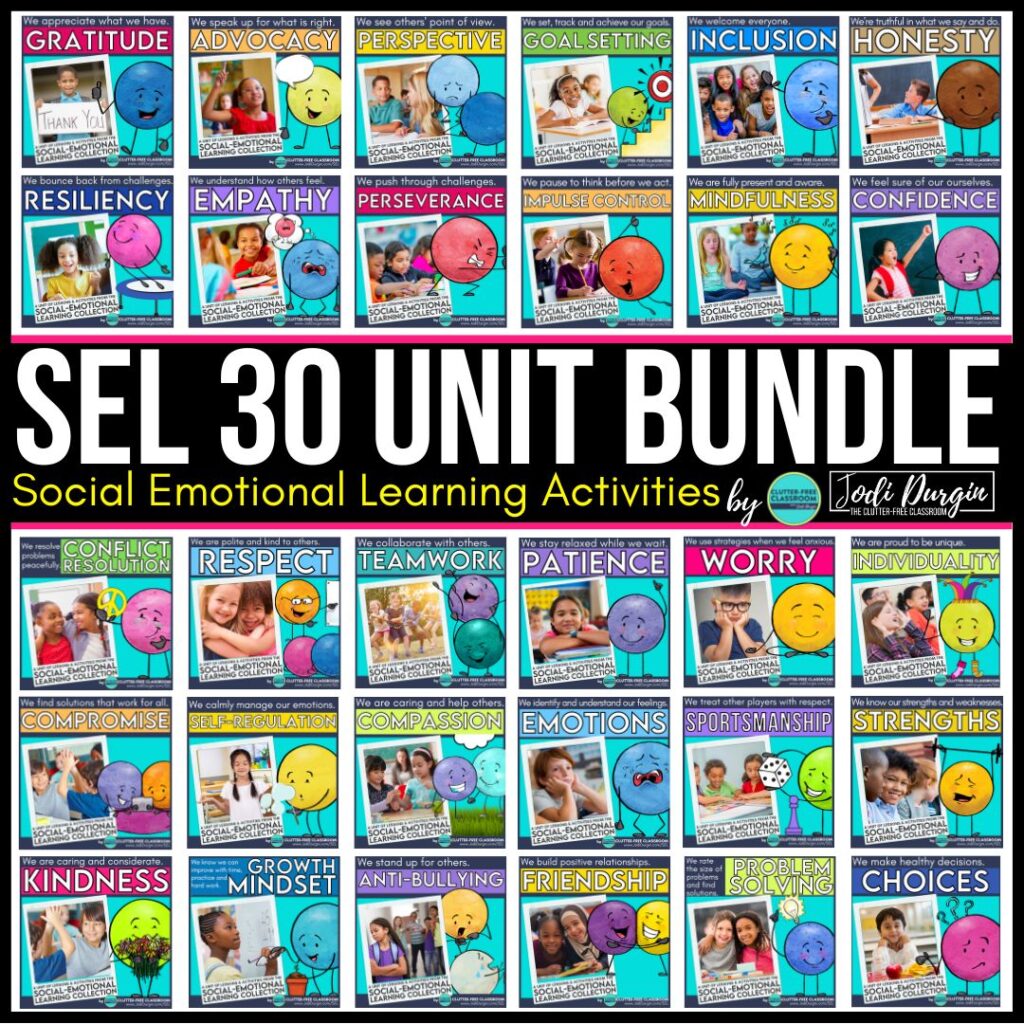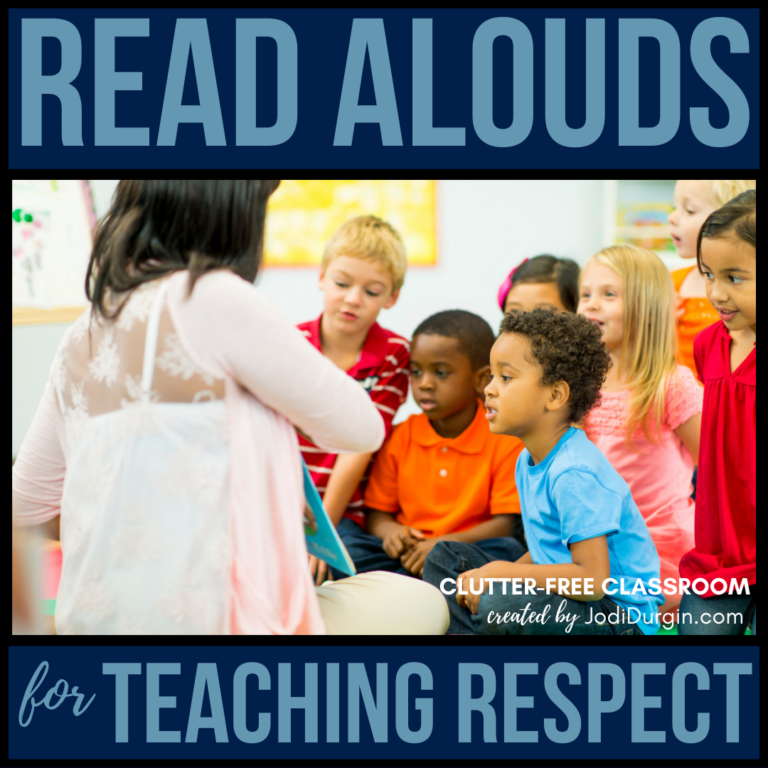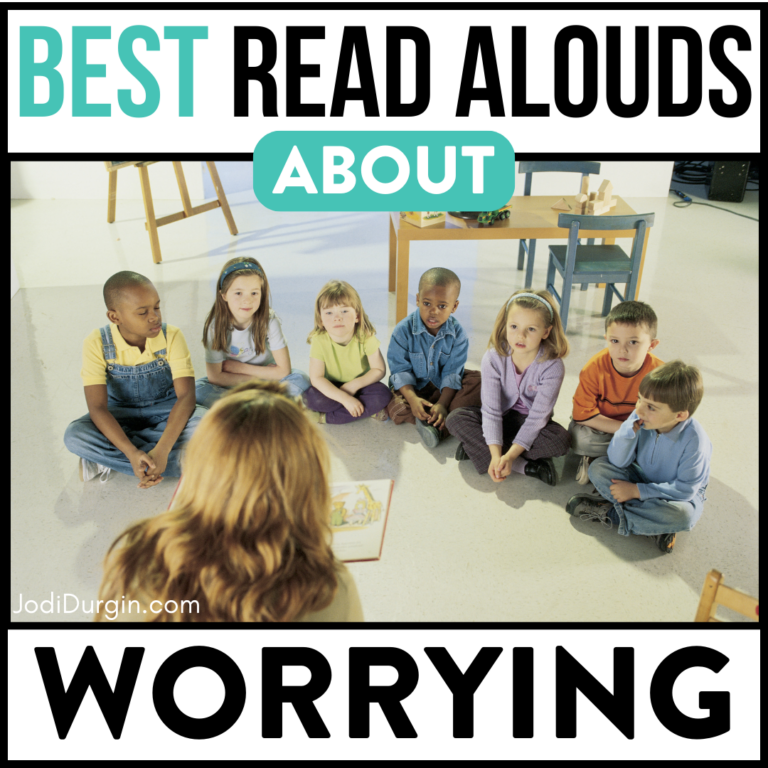If you are an elementary teacher looking to learn how to help your students be more respectful, then you found the right place! Being respectful prepares kids to treat others the way that they want to be treated and consider the feelings of others. Students who are respectful are kind and considerate towards others. In this post, we’ll go into detail about what respect is and why it’s important. In addition, we’ll share tips and ideas for how to teach being respectful in an elementary classroom setting. Read all about helping students to show respect in and out of the classroom below!

What Does Respect Mean?
Respect means treating others the way you want to be treated and showing that you care about the feelings and well being of others.
Why is it Important for Kids to Be Respectful?
It is important for kids to be respectful because it creates children who think carefully about the feelings of others and how their words and actions affect others. Kids who are respectful start to see the world with an open mind and don’t make unkind judgements about others.


How Do I Know If I Need to Teach Respect in My Classroom?
The students in your 1st, 2nd, 3rd, 4th or 5th grade classroom would benefit from lessons and activities on respect if any of these statements are true:
- Students interrupt each other.
- Your class is struggling with kindness.
- Your students are struggling with thinking about others.
- Students make judgements about each other.
- Students haven’t been using manners.


5 Reasons To Promote Respect In Your Elementary Classroom
Below are 5 reasons to promote respect in your elementary classroom.
1. Students will become more socially aware.
Teaching respect will help students become more socially aware because they will be thinking about treating others the way that they want to be treated. They will also be considering how their actions affect others, promoting social awareness.
2. Students will be kinder.
When reviewing respect, it is important to teach students about the golden rule of treating others the way they want to be treated. This creates kinder children because they won’t want to hurt the feelings of others because they will think about how they feel when their feelings are hurt.

3. Students will have better manners.
Promoting respect in your class will remind students about the importance of having manners. They will remember to say please and thank you, raise their hand, and show that they care about others.
4. Children will be more accepting of others.
Learning respect teaches the importance of not being judgmental of others. Respect means accepting someone for who they are, even when they are different from you or you don’t agree with them. This makes students more tolerant and accepting of others.
5. You will strengthen your classroom community.
Teaching students what respect is and why it is important will strengthen your classroom community if you hold students accountable for it. Students will be more tolerant of each other and kinder to each other. When people feel respected they develop feelings of trust and well-being.


5 Tips and Ideas for Teaching Respect
Check out the tips and ideas below for teaching respect!
1. Read Aloud Picture Books about Respect
Picture books are a great way to introduce and teach an SEL topic. It gets students thinking about the topic and activating their background knowledge. Check out this list of picture books for teaching respect!
2. Watch Videos about Being Respectful
There are tons of free online videos out there that promote social emotional learning. It’s a fun and engaging way to teach SEL skills that your students will enjoy. Check out these videos for teaching respect!
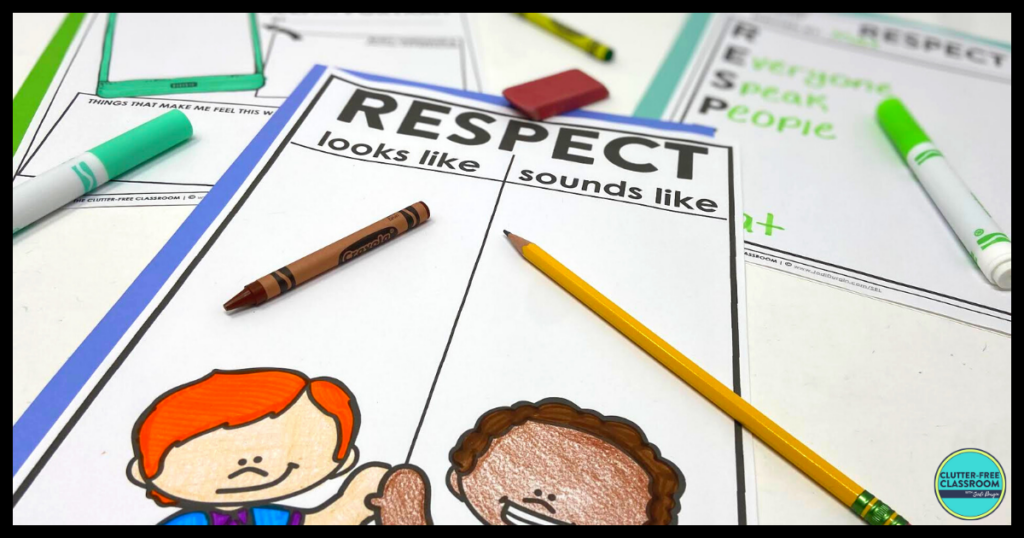
3. Explicitly Teach Vocabulary Related to Respect
Vocabulary words can help students develop understanding of respect and create connections through related words. Our Respect SEL unit includes ten vocabulary cards with words related to the SEL topic. It is important for students to be able to see, hear, and use relevant vocabulary while learning. One idea for how to use them is to create an SEL word wall as students learn the words.
4. Provide Practice Opportunities
When learning any skill, students need time to practice. Social emotional learning skills are no different! Our Respect SEL unit includes scenario cards, discussion cards, choice boards, games, and much more. These provide students with opportunities to practice the skills independently, with partners or small groups, or as a whole class.
5. Integrate Other Content Areas
Integrating other content areas with this topic is a great way to approach this SEL topic. Our Respect SEL unit includes reading, writing, and art activities.


Skills Related to Respect
Respect, in the context of social emotional learning (SEL) or character education, refers to treating oneself and others with dignity, honor, and consideration. While “respect” is the commonly used term, there are other words and phrases that can convey a similar meaning. These alternative words highlight different aspects of valuing, honoring, and showing regard for oneself and others. Here are some other words used in the context of respect:
- Esteem: Holding oneself and others in high regard, recognizing their worth and value.
- Honor: Showing respect, admiration, and recognition for someone’s qualities, achievements, or contributions.
- Reverence: Displaying deep respect, awe, or admiration for someone or something.
- Courtesy: Practicing polite, considerate, and respectful behavior towards others.
- Regard: Demonstrating care, attention, and respect towards someone’s well-being and feelings.
- Admiration: Expressing respect, appreciation, and positive regard for someone’s qualities or achievements.
- Recognition: Acknowledging and appreciating the abilities, contributions, or worth of oneself or others.
- Reverence: Displaying deep respect, awe, or admiration for someone or something.
- Valuing: Holding someone or something in high regard, recognizing their significance and worth.
- Civility: Engaging in respectful and courteous behavior towards others, promoting positive social interactions.
These terms encompass the concept of respect and reflect the qualities of valuing, honoring, and treating oneself and others with dignity and consideration within the context of social emotional learning (SEL) or character education.
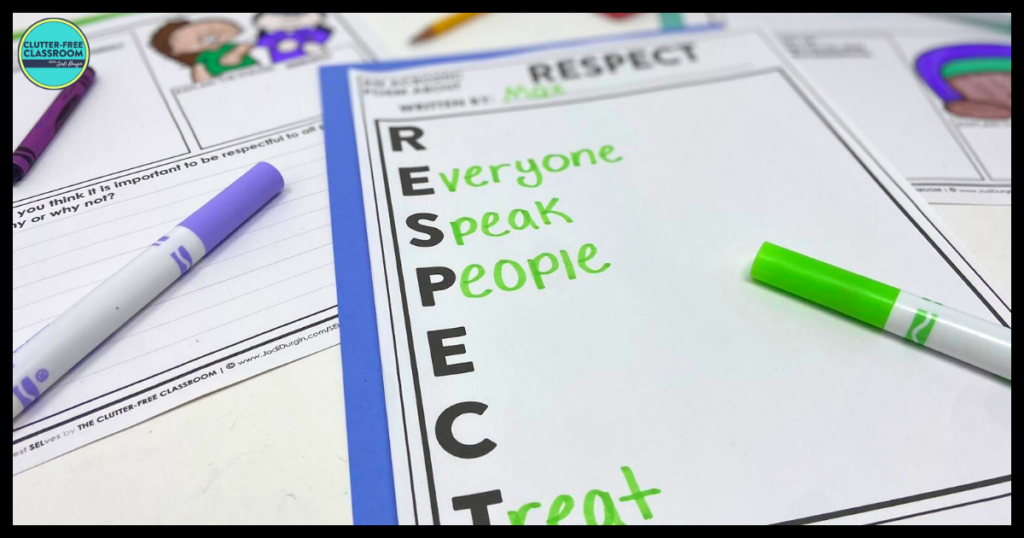
Download the SEL Activities
Click an image below to either get this individual respect unit or get ALL 30 SEL units!
In closing, we hope you found this information about teaching respect helpful! If you did, then you may also be interested in these posts.


